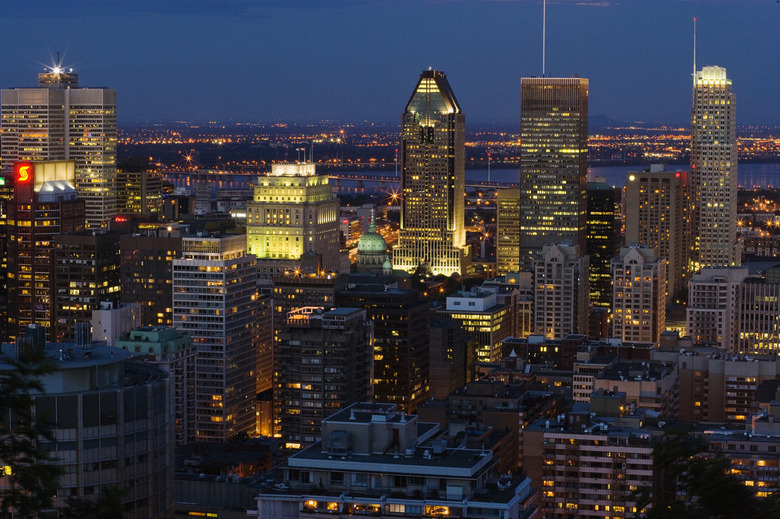Science Projects For Light Pollution
Have you ever wondered why you can't see very many stars at night near the city? While smog plays a part in covering up the night sky, light pollution also prevents us from seeing stars in the sky. Light pollution refers to the release of artificial light into the night sky. The closer we are to certain kinds of light sources, the more we experience the effects of light pollution.
Directing Our Light
Directing Our Light
One of the easiest ways to regulate light pollution is by directing light with shades. You can illustrate this in a project by outfitting light bulbs with different shapes and sizes of shades. An unshaded light will shine light in all directions. A well-designed shade will deflect light downward. You can illustrate the effect of light shading on the night sky by placing both bulbs in the vicinity of a simulation night sky. Allow observers to look at this "night sky" with the two different bulbs in place. They should have an easier time finding stars and constellations when the light is shaded downward.
Different Color Light
Different Color Light
Different colors of light affect our eyes in different ways. Red light, for example, does not harm our ability to see faint objects at night because our eyes respond more to shorter, blue-green wavelengths in low-light conditions. This is why astronomers use red flashlights and other sources of red light when making observations. As a project, you can expose people to different colors of light and then test their ability to see faint sources of additional light.
Light Pollution Maps
Light Pollution Maps
Different regions of the Earth are plagued with different levels of light pollution. This is easiest to see by a map of the Earth at night. In such a map, viewers can see just how much artificial light escapes into the night sky. You can add to a map by collecting some data on local light pollution in your area. Try to gather data about the average light pollution in the nearest city and contrast this with the nearest dark sky location.
Make Some Observations
Make Some Observations
One way to experience and illustrate the effects of light pollution is to make your own observations. From your own location at night, look through a cardboard tube from toilet paper or paper towels. Try to count the stars in a certain patch of the sky. Then, move to a darker or lighter location and observe the same region again. If you can't count the stars, try making a drawing of the stars you see in that region of the sky under different conditions. Gathering observations from different areas will help you and others understand the impact of light pollution.
Cite This Article
MLA
Murmson, Serm. "Science Projects For Light Pollution" sciencing.com, https://www.sciencing.com/science-projects-light-pollution-7726/. 24 April 2017.
APA
Murmson, Serm. (2017, April 24). Science Projects For Light Pollution. sciencing.com. Retrieved from https://www.sciencing.com/science-projects-light-pollution-7726/
Chicago
Murmson, Serm. Science Projects For Light Pollution last modified August 30, 2022. https://www.sciencing.com/science-projects-light-pollution-7726/
